| |
Camp Wollbach |
|
| |
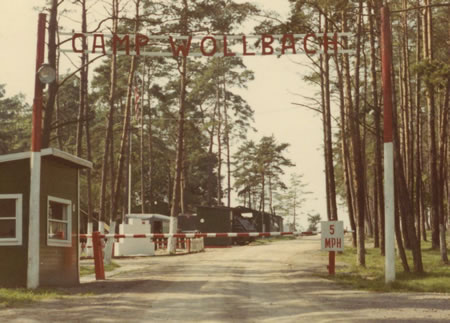
Colonel (Ret) Paul Palmer commanded the 2/14 ACR
from 1966 through 1968 and has provided great assistance to
the web site through text and photos that recall the cavalry
in Bad Kissingen prior to the re-flag of the Regiment in
1972. In his own words:
The Building of Camp Wollbach
"I had the honor of taking command of the 2/14
ACR in July 1966. Prior to this, I was working on a major staff
study at Heidelberg and I came to know the VII Commander, LTG
Mildren. As I got ready to move to Bad Kissingen, he told me,
Ď If you ever need any help let me know and Iíll see what I can do
...í
| |
|
|
|
|
| |
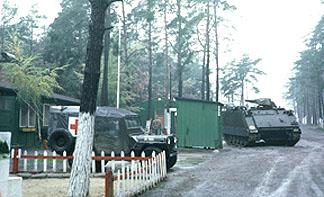
|
|
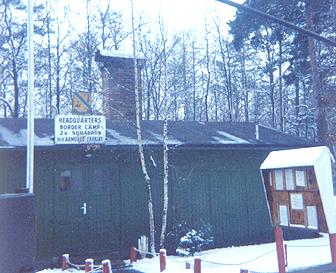 |
|
| |
Entrance to the border camp as of 1968. Much work had been done,
other improvements took place over time.
--Gene Meder |
|
Newly built Border Ops
Center in Winter of 1967
--Richard Harrington |
|
| |
|
|
|
|
|
|
| |
Among my first priorities upon taking
command was to review our border surveillance mission and
the border camp. Configured as a "tent city", Camp
Wollbach was similar to any forward camp found on the ranges
and MTAís in Germany. Conditions were Spartan but
acceptable. I felt, however, that perhaps we could do
better and began to investigate what improvements could be
made. At Daley Barracks, as both the squadron
commander and post commander, I had some freedom of action
and Lieutenant General Mildren pledged his support in
getting a more substantial camp built. |
|
| |
| |
|
|
|
|
| |
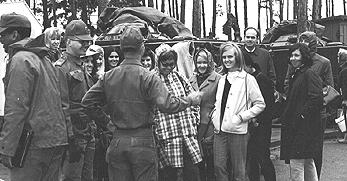 |
|
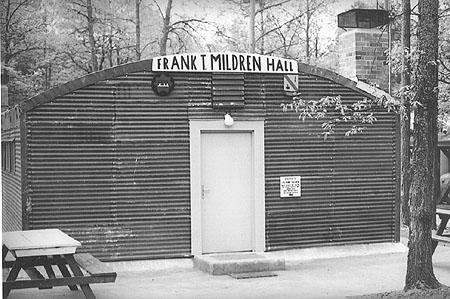 |
|
| |
Family day at the camp
, a good chance to show off what we had built.
--Richard Harrington |
|
Here is the new Day
Room in late 1967, named to honor the man who really helped us get
the project moving, LTG Frank T. Mildren.
--Paul Palmer |
|
|
|
| |
The German Facilities Engineers were
able to do a site survey and determine how to bring in
additional electricity, water and a septic system to support
an expanded and improved camp. Good fortune smiles on the
bold and, at the time, France had just pulled out of NATO
and the US forces in that country were departing. We were
able to identify and rapidly procure from a depot, the
Quonset Huts and other "tin" buildings that had been removed
from France and with General Meldrenís assistance, get them
moved and placed at the Wollbach. Other smaller buildings
were built on site and after three or four months, things
were really beginning to take on a professional look. Before
the end of 1966, all of our border troops were out of tents
and the camp was essentially complete. Troopers from the
squadron put in a lot of labor in addition to all the other
duty requirements and I was proud of their efforts. As a way
of acknowledging the great help of LTG Meldren, the newly
built Day Room was named in his honor complete with a sign."
|
|
| |
| |
|
|
|
|
| |
 |
|
 |
|
| |
Side view of Mildren
Hall.
--Paul Palmer |
|
Interior view of the
new Day Room.
--Paul Palmer |
|
| |
|
|
|
|
|
|
| |
Follow Up
Through the years, many additional improvements
occurred at Camp Wollbach / Lee. The pre-fab buildings were added in
the early 1970ís taking the place of the barracks style Quonset Huts
and as time and budgets allowed, further camp improvements occurred.
The sign on the Day Room - in use as the Camp Beer Hall, lasted at
least until 1978, the building itself was replaced in the major camp
upgrade in 1985. The camp has recently been sold to a group of
German investors who are exploring the idea of turning the site into
a Cold War theme museum. Remaining on site, however, are at least
two buildings from the first construction activities of 1966, the
former arms room and the metal building initially used as an Orderly
Room, then reconfigured to the Camp Lee Day Room then finally as the
Learning Center.
|
|
| |
| |
|
|
|
|
| |
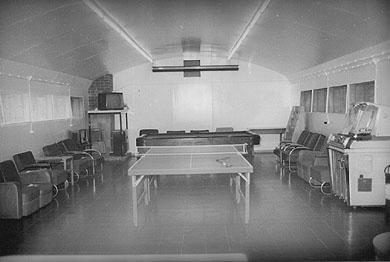 |
|
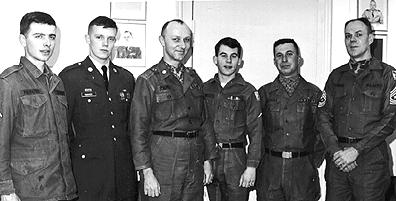 |
|
| |
... and here is the
interior view in the opposite direction.
--Paul Palmer |
|
Here I am surrounded by
the men who really did the heavy lifting to get the camp finished,
the soldiers of the 2/14 ACR to include Sergeant Major Jefferies at
far right.
--Paul Palmer |
|
| |
 |
|
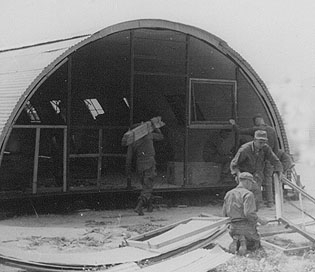 |
|
| |
"Frank T. Mildren Hall"
in use as the camp Beer Hall in 1978
--Bob Stefanowicz |
|
Quonset Hut
buildings being assembled at the border camp in 1966. These
became our barracks; we finally got rid of the tents. |
|
| |
|
|
|
|
| |
|
|
|
|
|
|
Return to
Border Mission
|